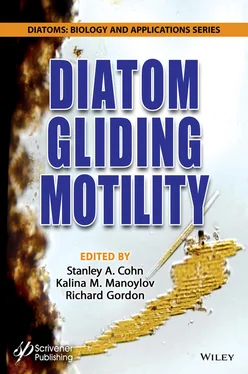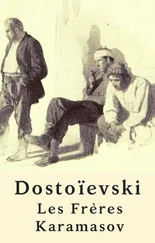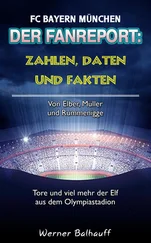5 Chapter 5Figure 5.1 The effect of incubation time on Stauroneis response times in a mixed culture of Craticula cuspidata and Stauroneis phoenicenteron . This graph displays the average direction change response times for Stauroneis phoenicenteron cells in the presence of ca. 9:1 ratio of live C. cuspidata: S. phoenicenteron cells. S. phoenicenteron cells were isolated and washed from culture and incubated together with C. cuspidata cells (C/S) in a 9:1 C. cuspidata:S. phoenicenteron ratio. Cells were then irradiated at their leading end with high irradiance (ca. 10 4μmol/m 2s) 1s pulses of blue (470 nm) light, and observed to determine the time until they changed direction (response time). Response times significantly increased almost 2-fold from the initial incubation interval (0-10 min) within 20-30 min (30±2 μm/s and 57±7 μm/s respectively, P =0.003). Graphs represent the mean values of response times ± 1 SE. For comparison, unirradiated Stauroneis cell response times were 155±11 μm/s. Error bars represent ± 1 SE.Figure 5.2 The effect of Craticula cuspidata or Pinnularia viridis presence on Stauroneis phoenicenteron response times. This graph displays the average direction change response times for S. phoenicenteron cells alone on slide chamber (Control). On a mixed slide chamber in a group by themselves (Isolated) or in a slide chamber in the presence of a high ratio of live C. cuspidata or P. viridis cells to S. phoenicenteron cells. Cells were then irradiated at their leading end with high irradiance 1s pulses of blue light, and observed to determine the time until they changed direction (response time). The presence of either C. cuspidata or P. viridis caused significant increases ( P < 0.03) in cell response time from either control or isolated S. phoenicenteron . Error bars represent ± 1 SE.Figure 5.3 The effect of culture medium on Stauroneis phoenicenteron response times. This graph displays the average direction change response times for S. phoenicenteron cells placed in the presence of culture medium in which either S. phoenicenteron , Craticula cuspidata , or a mixture of S. phoenicenteron and C. cuspidata cells had been growing. Samples of the media were extracted, then briefly centrifuged in a microcentrifuge to remove any contaminating cells or cell debris. The S. phoenicenteron cells were then immersed into the desired medium, then isolated onto a slide chamber, allowed to incubate, then irradiated at their leading end with high irradiance 1s pulses of blue light, and observed to determine the time until they changed direction (response time). There was no significant difference between any of the treatment groups. Error bars represent ± 1 SE.Figure 5.4 The effect of Pinnularia viridis on Stauroneis phoenicenteron response times. This graph displays the average direction change response times for S. phoenicenteron cells placed in two different areas of a cell chamber with differing proximities to P. viridis . This graph displays the average direction change response times for unirradiated S. phoenicenteron (Unirradiated), S. phoenicenteron irradiated in a slide chamber by themselves (Control), and S. phoenicenteron placed in a two-area slide chamber in which the entire chamber was subject to the same medium. Cells were irradiated at their leading end with high irradiance 1s pulses of blue light, and observed to determine the time until they changed direction (response time). The S. phoenicenteron in the two-area chamber were either in an area by themselves (Isolated), or in an area of the chamber where they were in close proximity to a large number of P. viridis (Live Pinn). In some trials the S. phoenicenteron were placed in the presence of dead P. viridis (Dead Pinn) that had been killed by immersing the P. viridis cells for 30 sec in 95% ethanol prior to rinsing the P. viridis with distilled water and fresh diatom medium. The S. phoenicenteron cells in the presence of living P. viridis showed a significant increase in response time, even though they were exposed to the same medium as the isolated S. phoenicenteron . while those in the presence of dead P. viridis showed no such increase in response time. Error bars represent ± 1 SE.Figure 5.5 Effect of Craticula cuspidata fixation method on repression of Stauroneis phoenicenteron direction change response time. S. phoenicenteron cells isolated and washed from culture were incubated together with C. cuspidata cells in a VALAP-spaced cell chamber where some Stauroneis were in contact with Craticula (grey bars) while other Stauroneis (isolated, solid bars) had no Craticula in near proximity. Stauroneis cells were then irradiated at their leading end with high irradiance flashes of blue light, and observed to determine the time until they changed direction (response time). Stauroneis in a mixed region with live Craticula had a significantly greater response time than Stauroneis in an isolated area ( P = 0.01). This increase in response time remained when S. phoenicenteron were in the presence of C. cuspidata cells killed in ethanol or acetone fixation alone, but no significant difference in response time was observed when C. cuspidata were killed with a 50:50 acetone:ethanol mixture. The isolated S. phoenicenteron in the chamber also showed increased response times in the treatments containing ethanol or acetone fixed C. cuspidata . Graphs represent the mean values of response times ± 1 SE.Figure 5.6 Histogram analysis of Stauroneis phoenicenteron response times. The figure displays the distribution of direction change response times for S. phoenicenteron when in isolated groupings (a) or when in a mixed assemblage with Pinnularia viridis (b). Stauroneis phoenicenteron cells, when in the presence of P. viridis show some cells with control levels of rapid response times, along with a number of cells with greatly increased response times.
6 Chapter 6Figure 6.1 Low-temperature scanning electron micrographs of diatom life styles (clockwise from top left): Stalked, tube forming, adpressed, epipelic. (Images: Irvine Davidson, University of St Andrews.)Figure 6.2 Low temperature electron micrograph of the pathway of an epipelic diatom moving thorough fine silt (Bar marker = 10 um). (Image: Irvine Davidson, University of St Andrews.)Figure 6.3 Top: Change in environmental driver (pressure) dependent on the presence of a “stabilizing biofilm” or under “regular erosion.” Bottom: Low-temperature scanning electron micrograph of MPB biofilm structure. (Image: Irvine Davidson, University of St Andrews.)
7 Chapter 7Figure 7.1 Proposed model of the control of vertical migration by sediment-inhabiting benthic pennate diatoms, as responding to main directional environmental stimulus, light and gravity. The figure illustrates the variation with the time of day of the diatom biomass at the sediment surface on samples kept in the dark (closed circles) and exposed to constant low light (150 μmol m- 2s- 1) during the subjective low tide period (open circles) (for more details, see [7.18]). Example of a day when the low tide takes place during the middle of the day. The gray horizontal plots represent the strength (bar thickness) of photo- and geotaxis, of negative and positive signal, along the day. (1) Upward migration starts before the beginning of the light period, driven by negative geotaxis. (2) Negative geotaxis ceases roughly at the time expected for start of the low tide light period: if no light is available at surface, the diatoms stop migrating upwards and the incipient biofilms start to disaggregate, due to random cell movement or weak positive geotaxis. (3) During light exposure, cell movements are controlled mainly by phototaxis, either positive (under low light intensities) or negative (under high light intensities). In the particular case of the data in the figure, positive phototaxis dominates, as samples were exposed to low intensity. (4) Anticipating the end of the light period, geotaxis becomes dominant over phototaxis, as cells begin to migrate downwards without any changes in incident illumination. Vertical gray areas represent periods of darkness. Vertical white area represents the period of light exposure (150 μmol m- 2s- 1) of the light exposed samples.
Читать дальше












